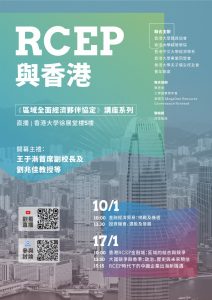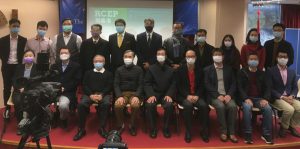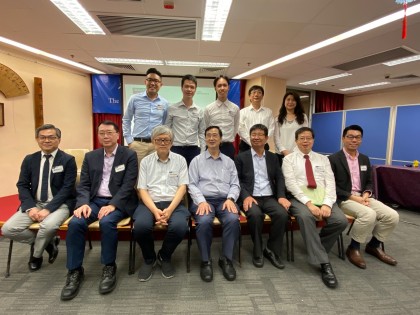香港集思會發表器官捐贈研究報告
港人對「選擇退出制」及「家人有最終决定權」呈兩極意見
集思會提出一系列建議,致力改善捐贈情況
《新聞稿》
(2015 年 12 月 11 日)
近期發生多宗病人等不及器官移植而離世的個案,令大眾關注。截至 2015 年 6 月底,本港有逾 2,400 人正等候器官移植,然而,每年僅得約 50 宗成功捐贈的 個案。
根據國際器官捐贈與移植登記組織(International Registry on Organ Donation and Transplantation, IRODaT)的數字,2014 年本港每一百萬人中,僅有 5.4 人於死後 成功捐贈器官。此人數不但遠遠落後於很多歐美國家,只及西班牙的七分一、美 國的五分一、英國的四分一,和澳洲的三分一,亦較同屬亞洲地區的南韓為低, 還連續兩年下跌。
現時約有 17 萬 9 千港人已於中央器官捐贈登記名冊登記;但要在死後成功捐出 器官,捐贈者需要符合腦幹死亡、心臟仍然跳動,且沒有嚴重創傷、癌症及傳染 病的條件。此外,香港人平均壽命很長,市民離世時體內的器官或因年齡關係, 已無法用作移植。即使死者捐出的器官非常健康,仍需要考慮血型、身型、遺傳 因子、病人身體狀況等因素。更重要的是,需得到捐贈者家屬同意。
香港集思會顧問、前香港人體器官移植委員會副主席汪國成教授便強調:「社會 需要大量的捐贈志願者,才能增加日後成功配對及移植的機會。」
對「選擇退出制」意見兩極,不宜貿然更改制度
早前有人建議,為求提升捐贈率,可仿效部分西方國家,將現時市民主動登記的 「選擇加入制」(Opt-in),改為預設全民捐贈、但容許日後退出的「選擇退出制」 (Opt-out)。
集思會於 2015 年 10 月以電話訪問了 1,500 名 15 歲及以上的市民,並與多位持 分者作深入訪談。研究發現,受訪者對「選擇退出制」的意見頗為兩極,「贊成 /非常贊成」的約為 43%,「不贊成/非常不贊成」的則為 34%。
支持者的主要理據是「可以有效增加捐贈人數」(55%)、「可以幫助到有需要的 人」(40%),以及「有權改變決定就沒有問題」(20%)。反對者的理由則包括「不 應該假設市民願意捐贈器官」(46%)、「感覺上是強制捐贈」(36%)、「對不理解 制度的人不公平」(19%),以及「未必懂得處理退出手續」(12%)。
由於社會對「選擇退出制」未有共識,該研究認為不宜貿然更改制度,以免製造 矛盾,適得其反。
「選擇退出制」需其他配套及社會條件配合
集思會是項研究涵括了不少海外案例,綜觀國際經驗,「選擇退出制」還需其他 條件配合,例如有效管理器官捐贈的架構及機制、足夠的醫療設施及人手、成熟 的器官捐贈文化等,政府及醫療機構亦要得到市民信任。若未有所需配套及環 境,可能會像新加坡一樣,實施「選擇退出制」後捐贈率仍毫無起色;甚至重蹈 巴西在 1997 年的覆轍,大量市民一起退出機制,令制度在第二年便遭廢止。
對「家屬決定權」未有共識
目前香港捐贈制度另一具爭議性之處,是不管死者生前的意願如何,直系親屬擁 有捐贈的最終决定權。據醫院管理局的統計,平均有四至五成家屬會拒絕捐出死 者的器官。
集思會的調查發現,有 38%受訪者贊成保留家屬的最終決定權,不贊成的則有 36%,兩者比例相若。其中 60 歲以上的長者傾向兩極化,贊成及反對的比率同 樣超過四成;年紀較輕的受訪者,對這個決定權相對沒有太大意見,以 15-19 歲 為例,表示「沒所謂」的比率高達 55%。
認為 18 歲可為自己作出捐贈決定
此外,最多受訪者認同一個人 18 歲時,便有獨立能力決定死後是否捐出自己的 器官,其次為 21 歲。當中年紀愈輕的受訪者,愈傾向認為 18 歲已可作出這項重要決定。
普遍認同捐贈意義,參與計劃者卻屬少數
值得關注的是,雖然逾八成受訪者認為死後捐出器官有意義/極有意義,但當被 問到是否願意在死後捐出個人器官時,很多人卻有保留,約有 43%受訪者表示願 意,18%不願意,「未決定」的近四成;政府應以這批「游離分子」為主要的推 廣目標。
調查又發現,在表示願意捐贈器官的受訪者中,尚未登記的高達 74%;而在未有 登記的受訪者中,近八成表示不知道在哪裡進行登記。大部分受訪者認為香港對 遺體器官捐贈的宣傳、提供的資訊並不足夠/非常不足夠。
傳統觀念要「留全屍」,部分人不清楚家人意願
不願意參與捐贈計劃的受訪者的主要顧慮是「覺得死後要保留全屍」(32%)、「害 怕/有恐懼感」(30%)及「自己年紀大,沒有合適器官可以捐贈」(25%)。不贊 成家人死後捐出器官的受訪者,意見大致相同。
若家人要在死後捐出器官,超過四成受訪者表示贊成,13%不贊成,覺得「沒所 謂」和「不肯定/不知道」的各佔兩成多。事實上,當被問及有沒有家人已登記 成為器官捐贈者時,近兩成人回答「不知道」。
現行機制未盡完善,容易錯過潛在捐贈者
綜合各受訪者的意見,目前器官捐贈登記的程序及系統設計落後,對市民來說並 不方便,亟待改善;而公立醫院因資源和設施不足,特別是深切治療部的病床短 缺,醫護人員(如器官移植聯絡主任、深切治療部員工)的工作過於繁重,又沒 有專責部門統籌和管理相關事宜,容易錯過潛在的捐贈者,流失部分有用的器官。
政策建議:
增加參與計劃的有效渠道,鼓勵市民積極登記
鑑於大部分受訪者(包括年青人)認為一個人到達 18 歲便有獨立能力為自己作 出捐贈决定,研究建議政府在市民領取成人身分證時,提供有關器官捐贈的資訊 及表格,表格提供「參加」、「不參加」及「未決定」三個自由選項,規定所有申 請者必須填寫遞交;有關措施亦可於市民申請永久性居民身分證時實施。
「此舉一方面可增加參與計劃的有效渠道,另一方面可提供合適機會,讓申請人 思考自己的公民責任,意義重大。」香港集思會總裁黎黄靄玲說。
改善登記系統,提升計劃形象,加強教育宣傳
為了吸納更多市民參與捐贈計劃,研究建議改善現有的登記系統,與醫療病歷互 通;鼓勵市民盡早向親友表明意願;提升捐贈計劃形象,善用紀念花園向捐贈者 表達敬意;為捐贈者設立特別撒灰區,加強對死者家屬的支援;深入社區解答公 眾疑難,凝聚不同界別支持;善用中學的通識教育平台,推動生命及死亡教育。
重整器官捐贈的行政架構,增加資源及培訓,作出長遠規劃
研究亦建議政府重整器官捐贈的行政架構,改善相關配套及設施,包括:於醫院 管理局設立專責部門,統籌器官捐贈工作;為醫護人員提供培訓,盡早發掘潛在 捐贈者;於深切治療部增設器官捐贈者病床,為臨終病人提供適切照顧,維持他 們體內各器官的良好狀態;定期發布器官捐贈及移植的數據,讓公眾掌握器官捐 贈的現況及變化;訂立長遠目標及計劃,整合及協調各界資源。
研究又建議政府作出長遠檢討,當上述政策未見成效,可考慮其他方案的可行 性,包括取消直系親屬的否决權、實行「選擇退出制」等。
詳細研究報告及建議請參閱香港集思會網站 http://www.ideascentre.hk。
研究方法
香港集思會委託政策二十一有限公司,以隨機抽樣電話訪問形式,於 2015 年 10 月訪問了 1,500 名 15 歲及以上的香港市民,了解他們對器官捐贈的態度及相關 問題的看法;並與多位醫護界人士、學者、病人組織代表、捐贈者家屬等持分者 作深入訪談;同時參考世界各地的器官捐贈政策和經驗。研究報告題為《香港遺 體器官捐贈初探》,於 2015 年 12 月 11 日發表。
研究團隊
汪國成教授 香港集思會顧問、前香港人體器官移植委員會副主席
黎黃靄玲女士 香港集思會總裁、前香港貿易發展局副總裁及總經濟師
唐希文女士 香港集思會高級研究主任,曾任職香港特區政府中央政策組研究 主任
余婉華女士 香港集思會高級研究主任,曾任職於香港特區政府统計處
香港集思會簡介
以「齊思考、創未來」為座右銘,香港集思會是一家獨立、無政治背景、非牟利 的民間智庫,由一群熱愛香港人士於 2008 年創立,專門發掘、搜集和研究對香 港經濟及社會發展富建設性和具創意的建議,給政府、有關人士和公眾參考。
透過集思廣益,香港集思會的研究工作有三大範疇:一、增加香港的競爭能力; 二、促進香港經濟及社會持續發展;及三、提升市民的生活質素。
傳媒查詢: Yvonne KWOK 電話: 2114 1488/9322 4639
 ()
() 

